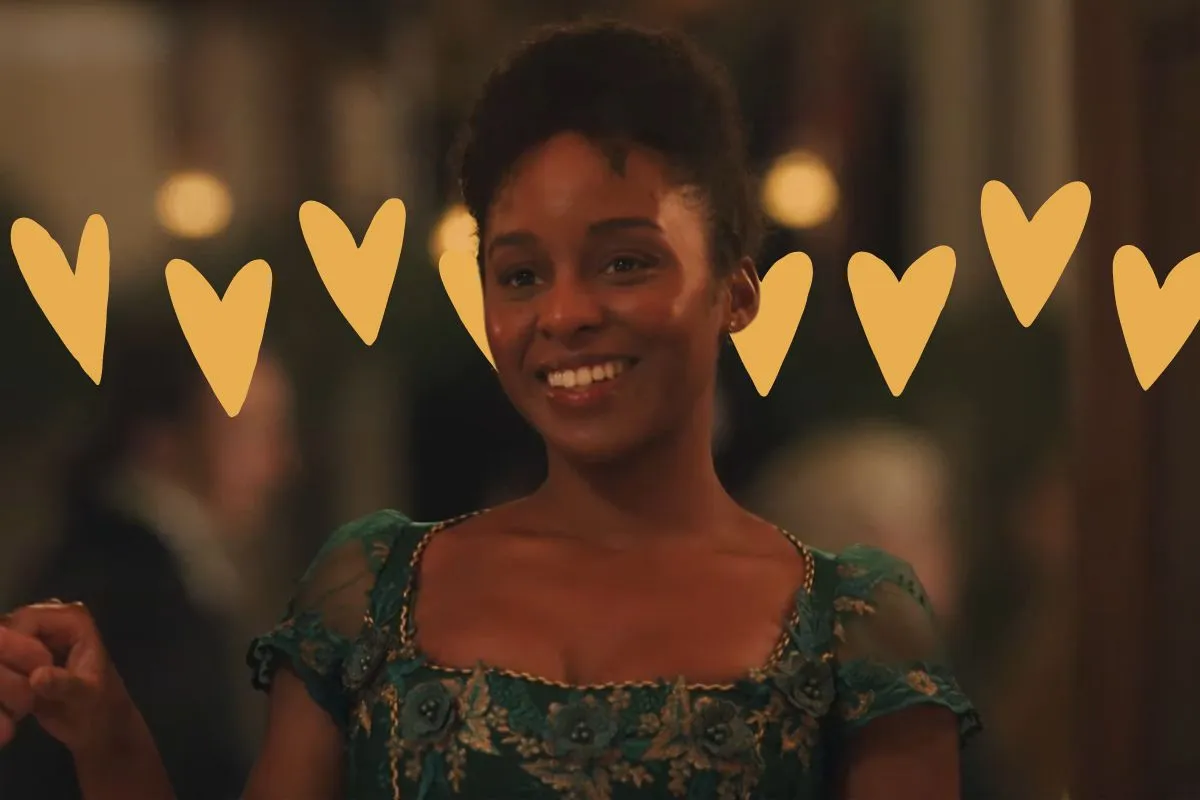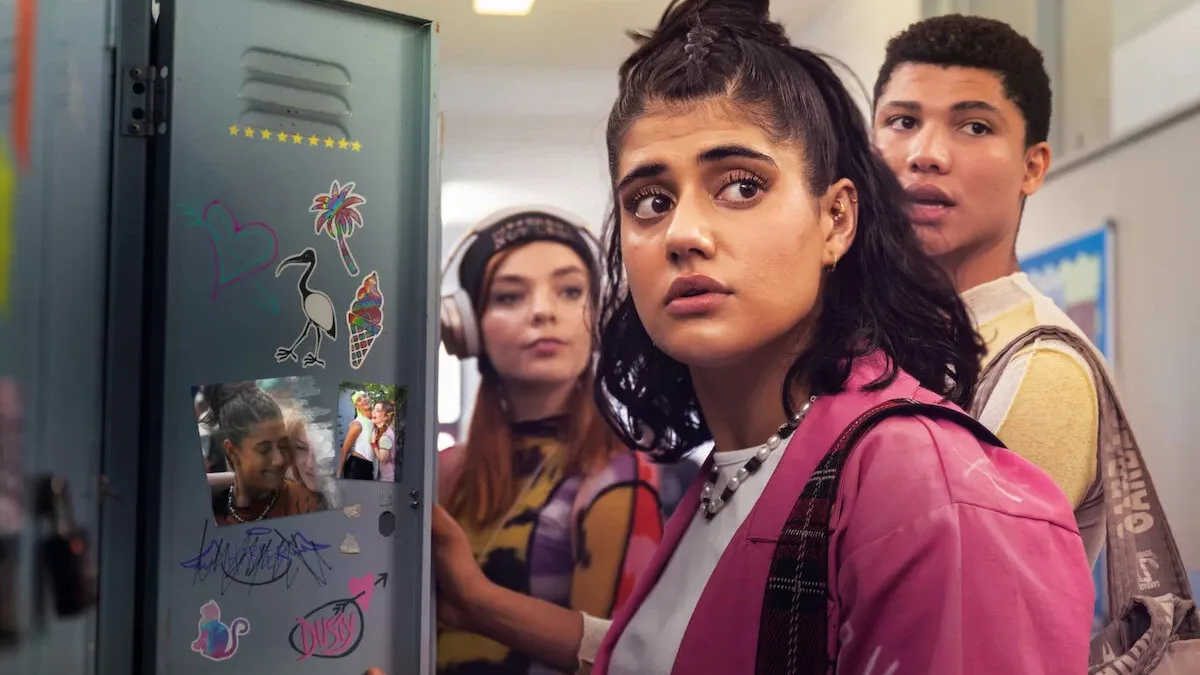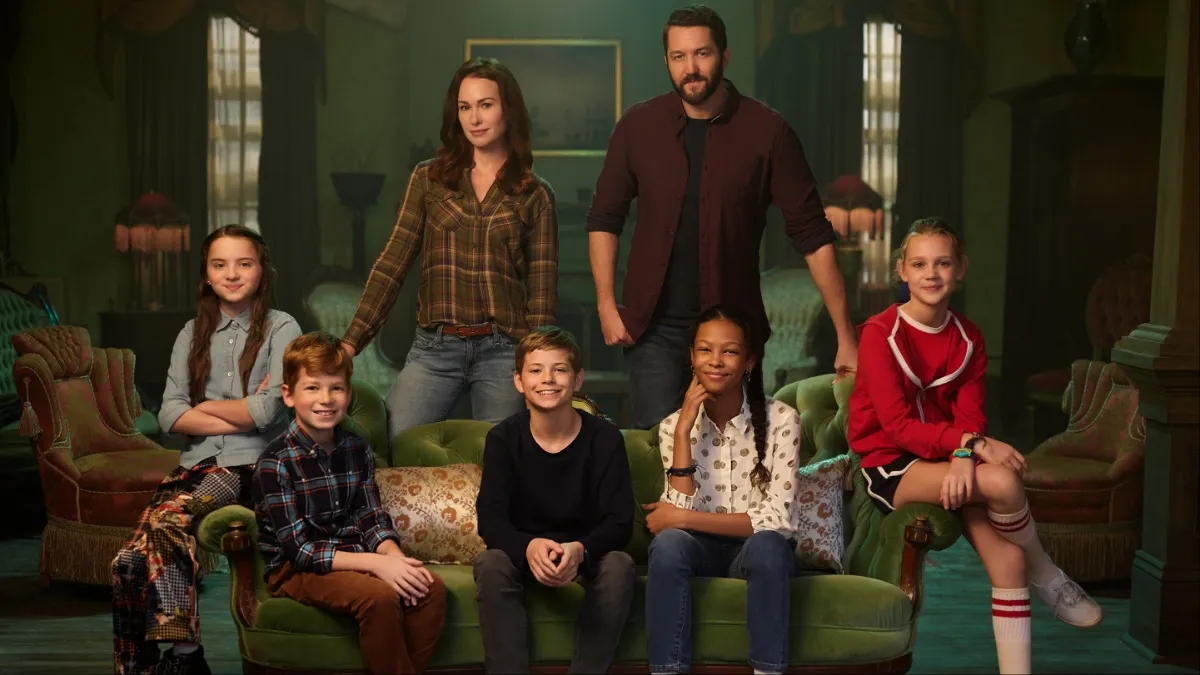In an ever-increasingly diversifying world of historical fiction and adapted works (particularly of romance stories set in the last 100 years of chattel slavery), many stories have fumbled writing characters of color. Sanditon‘s Georgiana Lambe (Crystal Clarke) feels like the first time I could love a character and her arc unconditionally. Sanditon was produced in part by PBS (and “viewers like you”), and nothing felt out of bounds in an effort for palatability. There was no fear of being unable to sell something or of making white audiences uncomfortable with being true to a character like Georgiana. This is one of the many reasons I confidently wrote that Sanditon raised the bar. I specified this in the context of PBS Masterpiece, but really it set a benchmark for the broader media landscape.
At the start of PBS Masterpiece‘s adaptation of Sanditon (an unfinished Jane Austen novel), the show featured one leading character, Charlotte Heywood (played by Rose Williams). Through her, we meet the colorful cast of characters making up the residents and visitors of the seaside town where a resort is being built. This includes the leading, supporting characters like season one love interest Sidney Parker (Theo James). Also, a new close friend, Georginana, is experiencing the town for the first time, too.
Of these and the number of other parts of the main and supporting cast, it is the West Indian heiress, Georgiana, whose role is expanded in the story. By the midway point of the three-season show, she’s essentially a co-lead alongside Charlotte. With that status, like Charlotte, Georgiana is given a satisfying, full-circle ending fit for an Austenian lead.
Georgiana’s beginnings
The daughter of a plantation owner and an enslaved woman, the Antiguan character is a more visible expression of intersecting marginalization. Even with education and a fortune, she’s forced to follow a gendered script expected of young women in regency England. The show could have attempted to pull a colorblind fantasy setting, but considering it’s PBS and this is the first non-book continuation of the novel, the team opted to keep the story as faithful as possible. Yes, Lizzie Bennet Diaries and Pemberley Digital did a version. However, the YouTube exclusive was a modernized edition set in contemporary California and blended into other Austen works.
As the only canon Black person in a Jane Austen work, she’s already a fascinating character. While we’ll never know what was intended for her story, the notes and descriptions made it clear that this wasn’t just for general intrigue. Austen’s work is beloved for many reasons, but one major one is discussing class and gender an intimate and true-to-life way. So, to make Georgiana one of the wealthiest people in the story, and certainly, the richest unmarried woman, meant the courting process and implications hold considerable weight.
In season one, Georgiana attempts to resist the severe grip on her by sabotaging arrangements. In addition to general defiance, she promised her love to another free Black person, Otis Molyneux (Jyuddah Jaymes). This action is against the wishes and demands of her guardians (especially Sidney) because Otis has no money or title. To Charlotte and us, the resistance seems futile. Even in Austen’s work, very few women “have it all,” and that right is typically reserved for the protagonist. Georgiana’s expression of resistance is often (but not always) juvenile but honest and, at times, necessary.
A common issue in work featuring women of color, particularly Black women characters, is an emphasis of race or gender as a primary trigger for the people around us. This is unrealistic as both, especially in primarily white-tailored settings. However, throughout Sanditon, both are handled masterfully. This is to the credit of the crew and Clarke, who was able to adjust the character.
With money shielding Georgiana from what little macro aggressions would take place in public and being around (mostly) people too nice (and too much to lose), class takes precedence in season one. Yes, even with the pineapple scene. While people like Lady Denham and others will show their full racists selves in front of Georgiana, her fortune keeps this from being a bigger issue.
Major spoilers for season two onward of Sanditon.
Side-kick to partner in the crime of being an outspoken woman
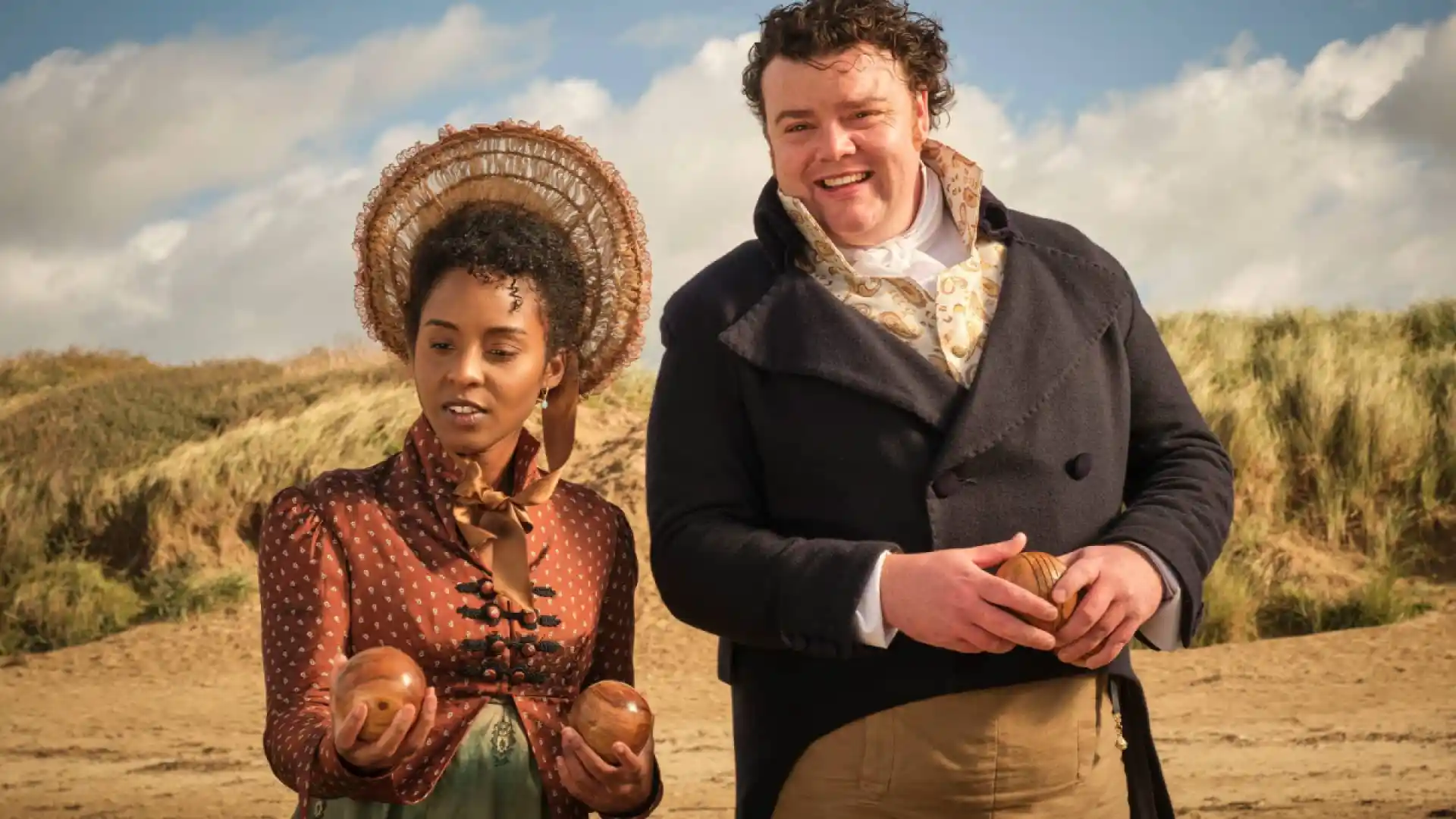
Having comfort in the friendship she builds with the Parkers (especially Arthur, played by Turlough Convery) and Charlotte, she has less to think about than dreading socializing where she’ll be pushed to engage with eligible men. Living in Sanditon about a year offers gives her comfort and something to protect. With time, Georgiana gains knowledge on how to dodge suitors with subtle rebellion older women have. The opening up comes at a cost as some of her worst fears come alive. However, this character development allowed Georgiana the courage to begin her abolition work with the sugar boycott. Her Blackness was not going to be something people could overlook, as she made that history a key part of her present and future. Leading the boycott helped Georgiana also come to terms with how her inheritance is directly the product of Britain’s slave trade.
Albeit in a much more significant way, the introduction of the sugar boycott mirrored Austen’s confrontation with slavery as a benefactor (like all in England) of its brutality through works like Mansfield Park, Emma, and her own life. In discussing the importance of bringing authenticity to Georgiana’s story, Sanditon season two script consultant Dr. Sharon D. Johnson discussed the cognitive dissonance that allows people to downplay how they benefit directly from slavery. As Georgiana and others confront it, Lady Denham and others recoil.
All of this (and more) cumulates in a season three trial as a cousin claims he has a claim to Georgiana’s fortune. Additionally, she experiences a shakey reunification with her mother (Agnès Harmon, played by Sharlene Whyte), previously believed to be dead. At this point, the growing cast of Black supporting characters offer different levels of comfort to Georgiana. Charlotte and others can only sympathize, whereas Otis, Agnès, and Mrs. Wheatley (Flo Wilson) offer empathy. After another long day at trial, the Parkers express concern about allowing Georgiana to speak with Otis unaccompanied. Her best friend defends this.
Despite their history, perhaps Mr. Molyneux can help Georgiana. He’ll understand her situation in ways we cannot, however hard we might try.
– Charlotte, e3, s3
Seasons two and three not only kept to those themes but expanded upon them. It felt natural to what Austen would have done if she continued working. I’m aware we should be hesitant to look at progress and growth as a straight line. And, that a more just world is a matter of if and not when. (This all can contribute to passivity.) However, the signs were there, and it’s not unthinkable.
Georgiana and Otis
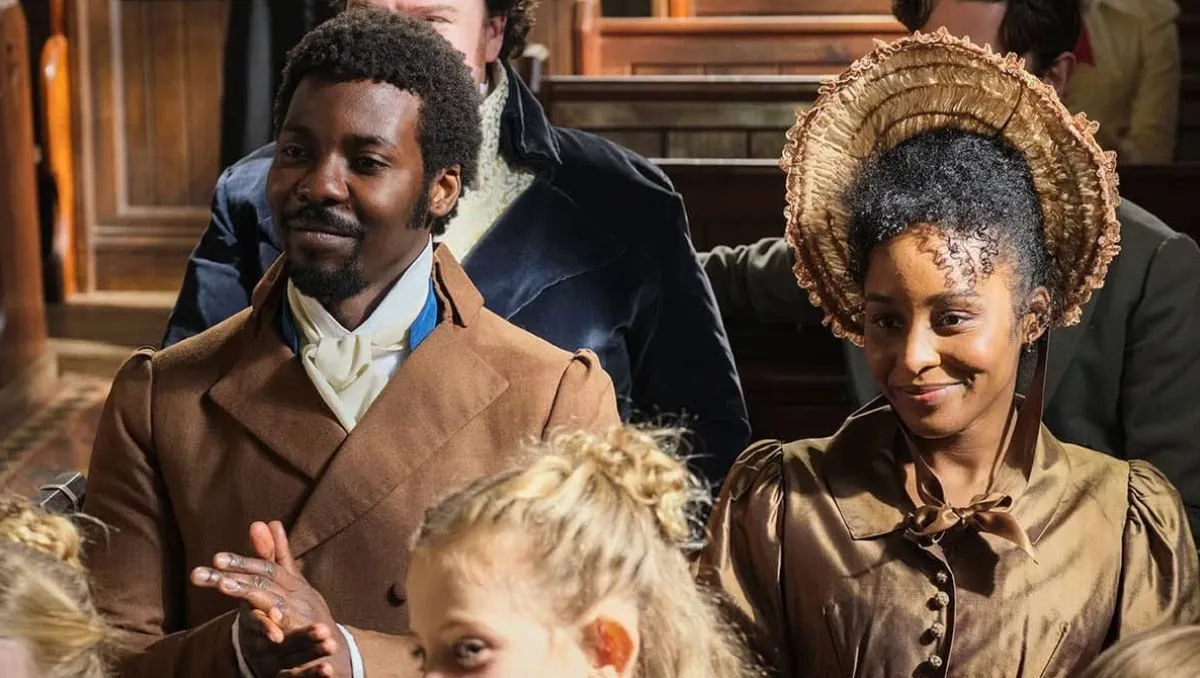
You gave me back my mother, and in return, she led me back to you.
Georgiana, s3, e6
Like her BFF Charlotte, Georgiana nearly got it all in the end. Georgiana gains a relationship with her mother and maintains a fortune to fund her commitment to abolition. Additionally, there’s the marriage aspect in her intimate wedding with longtime lover Otis. The Molyneux redemption was very significant to see play out.
While his gambling did put Georgiana in danger in season one, it’s not nearly as bad as Tom Parker’s (Kris Marshall) consistent recklessness with money. Parker’s race and class just afford him more wiggle room and safety than Molyneux. The potential for harm is higher for Georgiana than for Mrs. Parker (Kate Ashfield) because of her age, marriage status, race, and fortune.
Molyneux’s continued abolitionist work and getting Georgiana in contact with her mom was more than enough to forgive him and welcome him back into her life. Most importantly, Georgiana still silently yearned for him. After the events of season one, she made it clear she would not actively pursue a partnership. The two brief courtships/relationships were not love. One man was someone secretly trying to steal her fortune by posing as a fellow outsider. Before breaking it off for Otis, the final courtship was not Georgiana choosing love. Instead, it seemed like a decision made as an act of security. After barely holding onto her inheritance following a legal challenge, a strategic marriage into the Montrose family offered security.
In period dramas, people of color are often very tragic, but Miss Lambe is not tragic. Although tragedy surrounds her, she has pulled herself out of it.
– Crystal Clarke
The decision to come back to Otis after everything wasn’t just for love of him. She loved herself too much to settle to anyone else. She was focused in the work to free her people and using her fortune to do just that. Georgiana understood Otis’ work with The Sons of Africa (a real organization) reflected their shared sense of purpose and values. Sharing that and more makes the relationship more satisfying than him just being her first love from the first season.
I already miss her
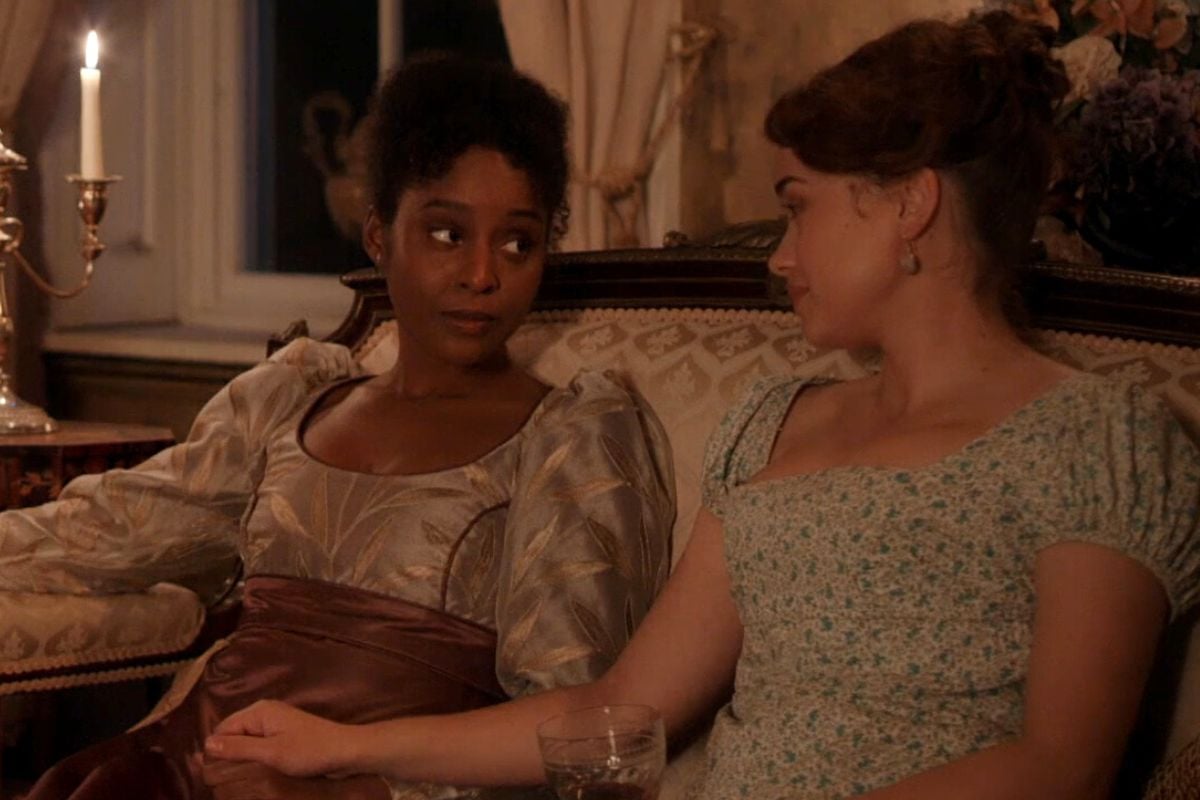
While a character like Georgiana existing is decades behind where we should be with television and film (thanks, red scare!), it feels kind of fitting she came from Jane Austen. Her work influenced most, if not all, romance writers today, regardless of subgenre. Elizabeth and Darcy are the blue-print for the enemies-to-lovers trope. On the Georigana’s happily ever after, Clarke told PBS Masterpiece:
Love is always a part of it. It’s always a part of it, to have someone to share our lives with. I don’t deny that, but I think part of Georgiana’s happy ever after is also her having autonomy and her being able to fully discover who she is, the things that she loves, what she values, and where she comes from, as well. To be able to have familial relationships. Relationships, not just necessarily just with her mom, but the Parkers too—a sense of community around her.
I’ve written extensively on how frustrating it is to have certain genres tepidly become more racially diverse only for them unable to stick the landing regarding handling the character with care. Pure fantasy isn’t perfect, but it feels miles ahead of stories that are fiction but feel the need to ground some reality. Or worst, make harmful excuses for its diversity. This character’s story is a near masterclass. She wasn’t infallible, and the story was made with her Blackness never as an afterthought.
Ideally, excellently written Black heroines would come from Black authors before a Jane Austen adaptation. The material and talent is in abundance. However, when historical romances with leads of color, I expect them to give the same care that was given to Georgiana—especially in later seasons when there was better representation at the writing stage. At the very least, it gives so much more depth and makes the ending feel earned.
(featured image: PBS Masterpiece remixed by Alyssa Shotwell)



